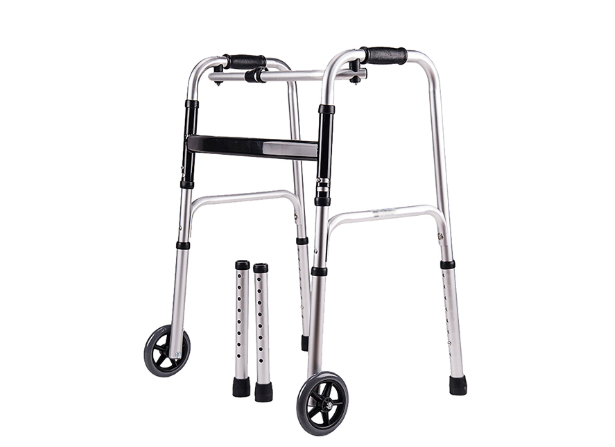As people age, maintaining mobility becomes essential for preserving independence, safety, and overall quality of life. For many seniors, a walking aid becomes more than just a support tool—it becomes a part of daily living. Whether due to balance issues, joint pain, or post-surgery recovery, walking aids offer reliable assistance to move safely and confidently.
If you’re asking “what is the best walking aid for elderly”, the answer depends on the individual’s physical condition, environment, and daily activity levels. Let’s explore the most trusted types of walking aid for elderly individuals, along with tips to choose the right one.
🦯 Why Walking Aids Are Important for the Elderly
Walking aids improve stability and reduce the risk of falls, which are a leading cause of injury among older adults. They also help relieve pressure on joints, particularly in individuals with arthritis, hip replacements, or muscle weakness. More than just support devices, walking aids promote freedom, confidence, and an active lifestyle.
🚶♂️ Types of Walking Aid for Elderly People
There is no one-size-fits-all answer to what is the best walking aid for elderly individuals. It depends on mobility level, balance, and even home layout. Below are the most common walking aids used by seniors:
1. Walking Canes
Canes are the simplest form of walking aid. They are lightweight, portable, and ideal for elderly individuals who need slight support on one side. Canes come in:
- Standard canes for mild balance issues
- Quad canes with a four-point base for added stability
Best for: Mild mobility issues or one-sided weakness.
2. Walking Frames (Standard Walkers)
A walking frame provides more support than a cane. These are metal frames with four rubber-tipped legs that the user lifts with each step. They offer excellent stability but require arm strength.
Best for: Seniors with significant balance or weight-bearing concerns.
3. Wheeled Walkers (Rollators)
Rollators are walkers with three or four wheels, hand brakes, and often a seat for resting. They are easy to maneuver and ideal for outdoor use. Rollators are a popular choice for independent elderly users who need moderate support.
Best for: Active seniors needing balance support with added comfort and convenience.
4. Knee Walkers (Knee Scooters)
These are used when one leg is non-weight-bearing due to injury or surgery. While not typical for all elderly users, they are helpful in specific medical cases.
Best for: Temporary use after foot or ankle surgery.
5. Crutches
Though not commonly used by seniors, crutches may be recommended temporarily after surgery or injury recovery when full offloading of one leg is needed.
Best for: Short-term rehabilitation.
🛒 Choosing the Best Walking Aid for Elderly Loved Ones
When choosing the best walking aid for elderly individuals, consider the following:
- Level of support needed – Can they walk short distances unaided, or do they require constant balance support?
- Indoor vs. outdoor use – Rollators are great for outdoor use, while standard walkers may be better for home use.
- Physical strength – Can they lift a walker, or would wheels and brakes be easier to manage?
- Storage and transport – If they travel, a foldable and lightweight walking aid is ideal.
- Seat requirement – A walker with a seat can be helpful for seniors who tire easily.
Always consult a doctor or physiotherapist for professional advice before purchasing.
💡 Additional Features to Look For
Premium walking aids for elderly users now include advanced features such as:
- Adjustable height for posture correction
- Ergonomic handles to reduce wrist strain
- Shock-absorbing wheels
- Safety brakes for added control
These features can make a significant difference in both comfort and safety.
✅ Final Thoughts
Choosing the right walking aid for elderly people is not just about support—it’s about enhancing life. It allows seniors to regain confidence in walking, engage in daily activities, and maintain social connections without the fear of falling.
If you’re still wondering what is the best walking aid for elderly, think about the user’s lifestyle, medical needs, and physical strength. The right device can transform day-to-day mobility into an experience of freedom and dignity.
With the wide range of high-quality, ergonomic walking aids available today, supporting your loved ones in their golden years has never been easier.





























